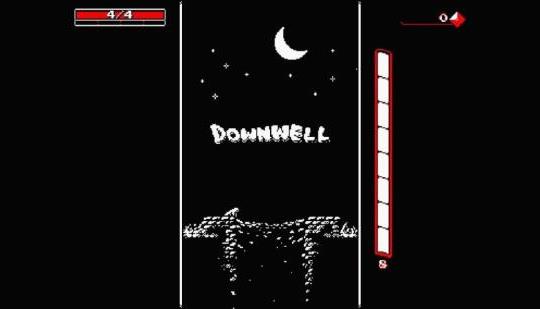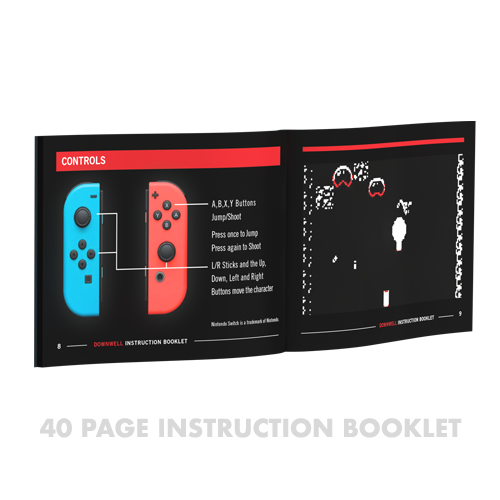


Collecting enough gems will also send you into a “gem high” state, which will give you better accuracy and damage. Racking up kills will start off your combo counter with the higher figures giving you bonus gems and even an extra life. However, they have finite uses before you need to land or kill an enemy so that they recharge, which ties in with Downwell’s unspoken necessity for combos. The gun-boots’ primary purpose is to dispose of the varied enemies, but they’re also necessary for using momentum to move you across the screen. Controlling the gun-boots is as straightforward as jumping and then shooting, but there’s a surprising amount of complexity and strategy that comes with even a simple jump. Almost every button on the Switch does the same thing, so whether you want to shoot/jump with the face or bumper buttons, it’s up you. You control the direction of the young man who decided to take the plunge and jump and shoot with the same button - that’s it. The gameplay is simple, so simple in fact that it uses only three buttons, two if you count the Switch’s analog stick as a single button. Downwell is as absorbing a game as you’re likely to find at its price point, it offering a considerable return on investment with potentially dozens of hours of playtime for a game with “just” five different levels.

You’ll grunt with anger and curse the game’s blasted bats before diving right back in for another round, only to find the layout is more favourable this time out. It’s what makes the game still feel like such a small-scale revelation despite it having initially launched three years ago. Arriving on the Switch, which seems like such a natural fit, Downwell comes with a reputation of being a challenging lo-fi platformer with every inch of progress throughout its procedurally generated levels feeling like a mile. Despite having now played it on three different platforms, Downwell still feels as fresh and irresistible as the first time I strapped on my gun-boots and started the descent.


 0 kommentar(er)
0 kommentar(er)
